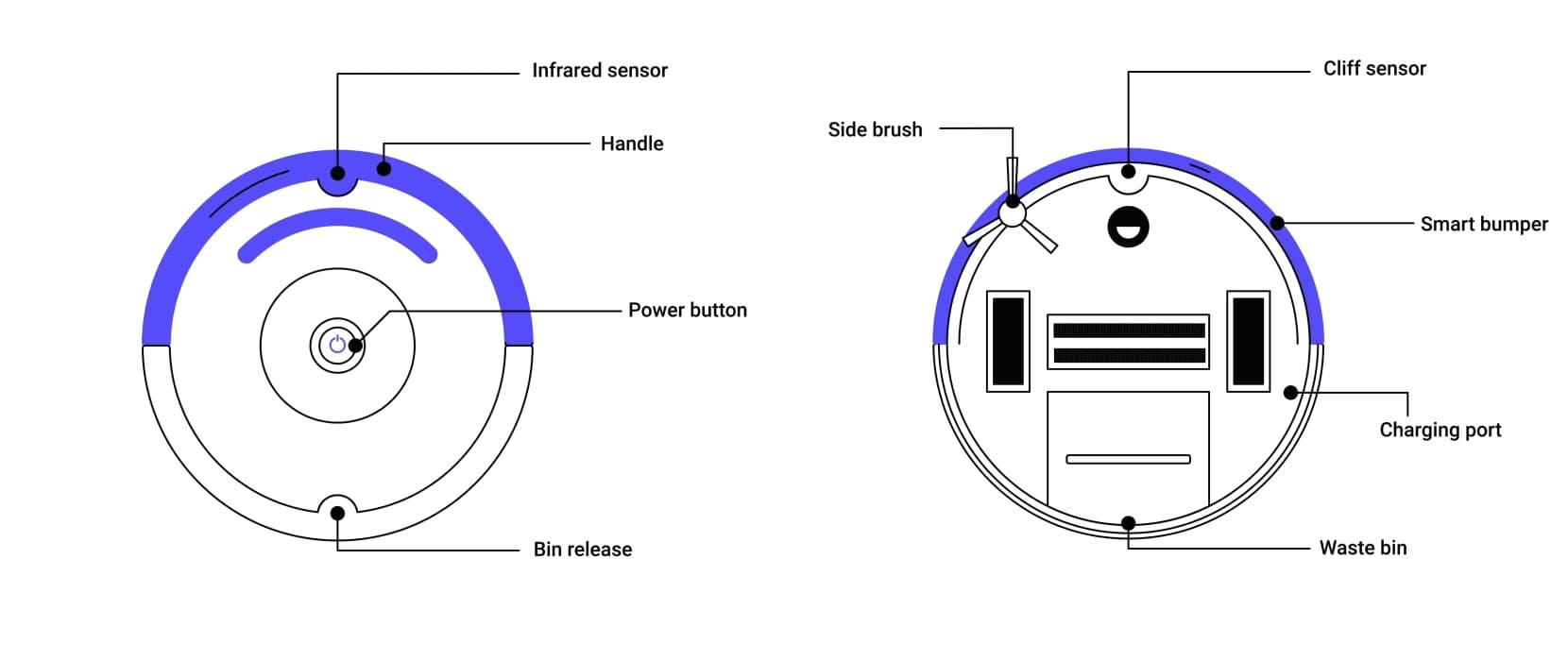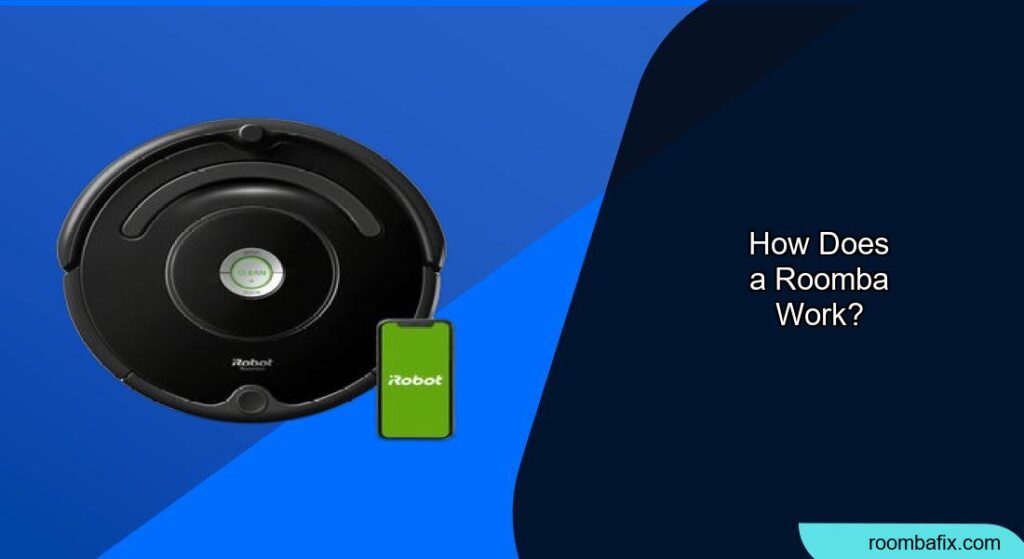Have you ever wondered how a Roomba effortlessly navigates your home, sucking up dirt and debris? These little robotic vacuums have revolutionized cleaning, but the technology behind them can seem mysterious. This article breaks down the inner workings of a Roomba, explaining its sensors, navigation, and cleaning mechanisms in detail.
Roombas are more than just automated vacuum cleaners; they’re sophisticated robots packed with sensors and clever programming. Understanding how they function not only satisfies curiosity but also helps you use and maintain your Roomba more effectively. We’ll explore everything from dirt detection to cliff avoidance, providing a clear picture of how these devices keep your floors clean.
In this guide, we’ll delve into the core components of a Roomba, examining how each part contributes to its overall performance. By the end, you’ll have a solid grasp of the technology that makes these robotic helpers so efficient and convenient. Let’s dive in and uncover the secrets of the Roomba.
What are the Core Components of a Roomba?

A Roomba’s functionality relies on a combination of hardware and software components working in harmony. These include its sensors, motor, brushes, and onboard computer. Each element plays a crucial role in the robot’s ability to navigate and clean effectively.
Sensors and Navigation System
Roombas use a variety of sensors to perceive their environment. These sensors help the Roomba avoid obstacles, detect dirt, and prevent falls.
- Cliff Sensors: These infrared sensors detect edges and drop-offs, preventing the Roomba from falling down stairs.
- Wall Sensors: These sensors allow the Roomba to follow along walls and edges for thorough cleaning.
- Dirt Detect Sensors: Acoustic sensors that identify areas with high concentrations of dirt, prompting the Roomba to focus on those spots.
- Bump Sensors: Mechanical sensors that detect collisions with obstacles, allowing the Roomba to change direction.
Cleaning System and Mechanisms
The Roomba’s cleaning system is designed to pick up dirt, dust, and debris from various floor types. The key components include:
- Brushes: Roombas typically have two main brushes: a multi-surface brush and an edge-sweeping brush. The multi-surface brush agitates dirt, while the edge-sweeping brush cleans along walls and corners.
- Vacuum Motor: This motor creates suction to lift dirt and debris into the collection bin.
- Filter: The filter traps fine particles, preventing them from being released back into the air.
- Collection Bin: This is where all the collected dirt and debris are stored until you empty it.
Power and Battery
Roombas are powered by rechargeable batteries, typically lithium-ion. The battery life varies depending on the model and usage, but most Roombas can run for 60-90 minutes on a single charge. When the battery is low, the Roomba automatically returns to its charging dock.
How Does Roomba Navigate Your Home?
Navigation is key to a Roomba’s ability to clean effectively. Different models use various navigation technologies, each with its own strengths and limitations.
Random Bounce Navigation
Older Roomba models use a “random bounce” navigation system. They move in a seemingly random pattern, changing direction when they encounter an obstacle. While simple, this method can be surprisingly effective at covering an entire room over time.
Systematic Navigation
Newer Roomba models employ more sophisticated navigation systems, such as iAdapt® technology. This system uses sensors and mapping to create a virtual map of your home, allowing the Roomba to clean in a systematic, back-and-forth pattern. This results in more efficient and thorough cleaning.
Virtual Walls and Keep-Out Zones
To control where the Roomba cleans, you can use virtual walls or keep-out zones. Virtual walls are physical barriers that emit an infrared beam, preventing the Roomba from crossing. Keep-out zones are defined in the Roomba’s app, allowing you to create no-go areas on the virtual map.
What is Dirt Detection Technology in Roomba?

One of the standout features of a Roomba is its ability to detect and focus on areas with high concentrations of dirt. This is achieved through Dirt Detect technology.
Acoustic Sensors
Roombas use acoustic sensors to detect the sound of dirt and debris being sucked up. When the sensors detect a higher level of noise, the Roomba will concentrate on that area, making multiple passes to ensure thorough cleaning.
Visual Sensors
Some advanced Roomba models use visual sensors to identify dirt and debris on the floor. These sensors capture images of the floor and analyze them to detect areas that need extra attention.
How Dirt Detect Works in Practice
When a Roomba detects a dirty area, it will often perform a “spot cleaning” routine, where it moves in a spiral pattern to focus on the area. The Roomba will continue this routine until the dirt is removed or until it determines that the area is clean.
Roomba Cleaning Modes and Customization
Roombas offer a variety of cleaning modes and customization options to suit different needs and preferences. Understanding these options can help you get the most out of your Roomba.
Cleaning Modes
- Automatic Mode: The Roomba cleans the entire floor area, using its navigation system to cover as much ground as possible.
- Spot Cleaning Mode: The Roomba focuses on a specific area, moving in a spiral pattern to clean up spills or messes.
- Edge Cleaning Mode: The Roomba follows along walls and edges to ensure thorough cleaning in these hard-to-reach areas.
- Max Mode: The Roomba uses maximum suction power to clean carpets and rugs.
Scheduling and App Control
Most modern Roombas can be scheduled to clean at specific times, allowing you to automate your cleaning routine. You can also control the Roomba remotely using a smartphone app, which allows you to start, stop, and pause cleaning, as well as customize cleaning settings.
Custom Cleaning Zones
Some advanced Roomba models allow you to create custom cleaning zones, where you can specify which areas of your home you want the Roomba to clean. This is useful for targeting high-traffic areas or rooms that need more frequent cleaning.
Maintaining Your Roomba for Optimal Performance

Proper maintenance is essential for keeping your Roomba running smoothly and efficiently. Regular cleaning and maintenance can extend the life of your Roomba and ensure it continues to deliver optimal cleaning performance.
Cleaning the Brushes
The brushes are a critical part of the Roomba’s cleaning system, so it’s important to keep them clean. Remove any hair, string, or debris that may be tangled in the brushes.If your brushes are worn or frayed, replace them.
Emptying the Collection Bin
Empty the collection bin regularly, ideally after each cleaning session. A full bin can reduce the Roomba’s suction power and cleaning effectiveness.For a damaged or worn bin, get a replacement.
Cleaning or Replacing the Filter
The filter traps fine particles, so it’s important to clean or replace it regularly. Depending on the model, you may be able to wash the filter with water or you may need to replace it every few months.
Checking and Cleaning the Sensors
The sensors are essential for the Roomba’s navigation and obstacle avoidance, so it’s important to keep them clean. Use a soft, dry cloth to wipe the sensors clean.
Troubleshooting Common Roomba Problems
Even with proper maintenance, you may encounter some common problems with your Roomba. Here are some troubleshooting tips to help you resolve these issues.
Roomba Not Cleaning Thoroughly
- Check the Brushes: Make sure the brushes are clean and free of debris.
- Empty the Collection Bin: A full bin can reduce suction power.
- Clean or Replace the Filter: A clogged filter can also reduce suction power.
Roomba Getting Stuck
- Clear Obstacles: Remove any small objects or cords that the Roomba might get stuck on.
- Use Virtual Walls or Keep-Out Zones: Prevent the Roomba from entering areas where it’s likely to get stuck.
Roomba Not Charging
- Check the Charging Contacts: Make sure the charging contacts on the Roomba and the charging dock are clean.
- Replace the Battery: If the battery is old or damaged, it may not hold a charge.
Roomba Not Following Schedule
- Check the App Settings: Make sure the schedule is set correctly in the app.
- Check the Roomba’s Clock: Make sure the Roomba’s clock is set to the correct time.
Tips, Warnings, and Best Practices
- Regular Cleaning: Schedule your Roomba to clean regularly, even if it’s just for a quick once-over.
- Pre-Cleaning: Before running your Roomba, pick up any small objects, cords, or clothing items that could get in its way.
- Floor Type Settings: Use the appropriate floor type settings for your floors. Some Roombas have settings for carpets, hardwood floors, and tile.
- Monitor Performance: Keep an eye on your Roomba’s performance and address any issues promptly.
Warnings
- Water and Liquids: Do not allow your Roomba to come into contact with water or other liquids.
- Flammable Materials: Do not use your Roomba to clean up flammable materials.
- Small Objects: Keep small objects and cords out of the Roomba’s path to prevent it from getting stuck or damaged.
Best Practices
- Read the Manual: Familiarize yourself with your Roomba’s features and functions by reading the manual.
- Keep Software Updated: Ensure your Roomba’s software is up to date to take advantage of the latest features and improvements.
- Contact Support: If you encounter any issues that you can’t resolve yourself, contact Roomba’s customer support for assistance.
FAQ
How often should I empty my Roomba’s dustbin for optimal performance?
Ideally, you should empty the dustbin after each cleaning session. A full dustbin reduces the Roomba’s suction power, which leads to less effective cleaning. Regular emptying ensures your Roomba operates at peak efficiency.
Can a Roomba navigate different floor types, like hardwood and carpet?
Yes, most Roombas can navigate different floor types. Many models automatically adjust their brush height and suction power to suit various surfaces, transitioning seamlessly between hardwood, tile, and carpet. This adaptability ensures consistent cleaning throughout your home.
What is the lifespan of a Roomba battery, and how can I extend it?
A Roomba battery typically lasts for 1-3 years, depending on usage and maintenance. To extend its lifespan, avoid fully discharging the battery regularly, keep the charging contacts clean, and store the Roomba in a cool, dry place. Replacing the battery when needed will maintain optimal performance.
How does Roomba handle pet hair, and what maintenance is required?
Roombas are generally effective at handling pet hair. Models with tangle-free extractors are particularly good at preventing hair from wrapping around the brushes. Regular maintenance includes cleaning the brushes and emptying the dustbin frequently to prevent clogs.
Are Roomba’s safe to use around children and pets?
Yes, Roombas are generally safe to use around children and pets. However, it’s important to supervise young children and pets during the cleaning process to prevent them from interfering with the Roomba or potentially damaging it. Keep small objects and cords out of reach to ensure safe operation.
What are virtual walls, and how do they enhance the Roomba’s cleaning efficiency?
Virtual walls are devices that emit an invisible barrier, preventing the Roomba from entering specific areas. This enhances cleaning efficiency by allowing you to direct the Roomba to clean only the desired spaces, avoiding sensitive or hazardous zones. They help customize and control the Roomba’s cleaning path.
Conclusion
Understanding how a Roomba works can help you appreciate its advanced technology and use it more effectively. From its navigation system to its dirt detection technology, every component plays a crucial role in keeping your floors clean.
By following the maintenance tips and best practices outlined in this guide, you can ensure that your Roomba continues to provide optimal cleaning performance for years to come. So, whether you’re a new Roomba owner or a long-time user, we hope this article has given you a deeper understanding of these amazing robotic vacuum cleaners and how they work. Embrace the convenience and enjoy a cleaner home with the help of your Roomba.

